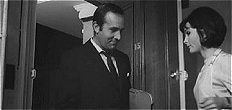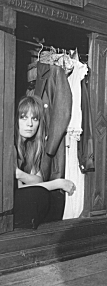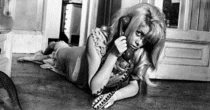 |

 |
Repulsion
Roman Polanski’s brilliant study of sexual repression in London during the Sixties |
 |
‘Repulsion’
was described by one critic as ‘the most terrifying film ever made,’
and it remains, along with ‘Psycho’ and ‘Les Diaboliques’, one of
the classic films of psychological suspense. Unlike ‘Psycho’, there is no neat explanation at the end. Rather, we are left with an enigmatic ‘clue’ to the horrific terror and repulsion which sex holds for the pretty blonde Belgian girl Carol Ledoux. |








